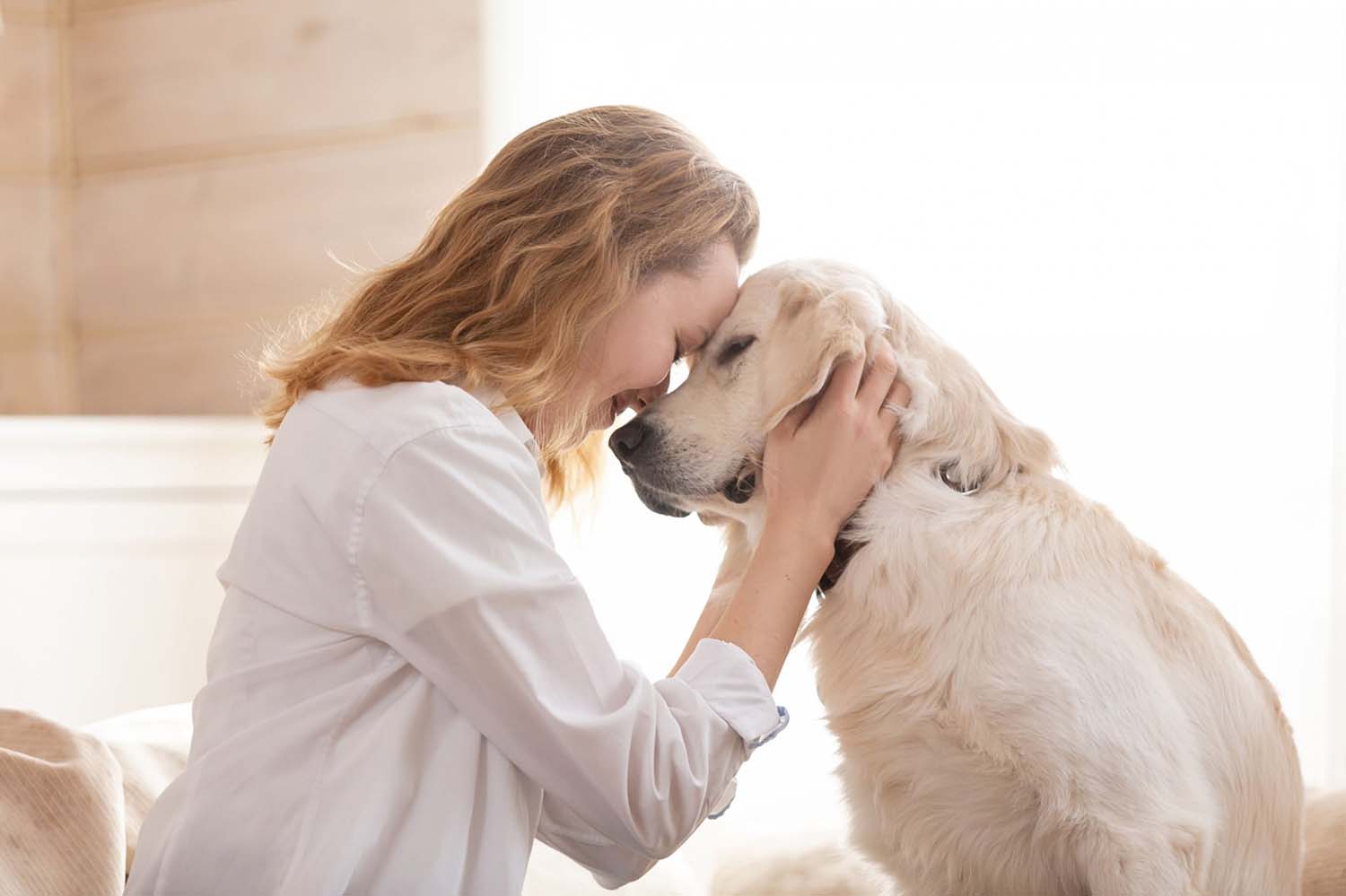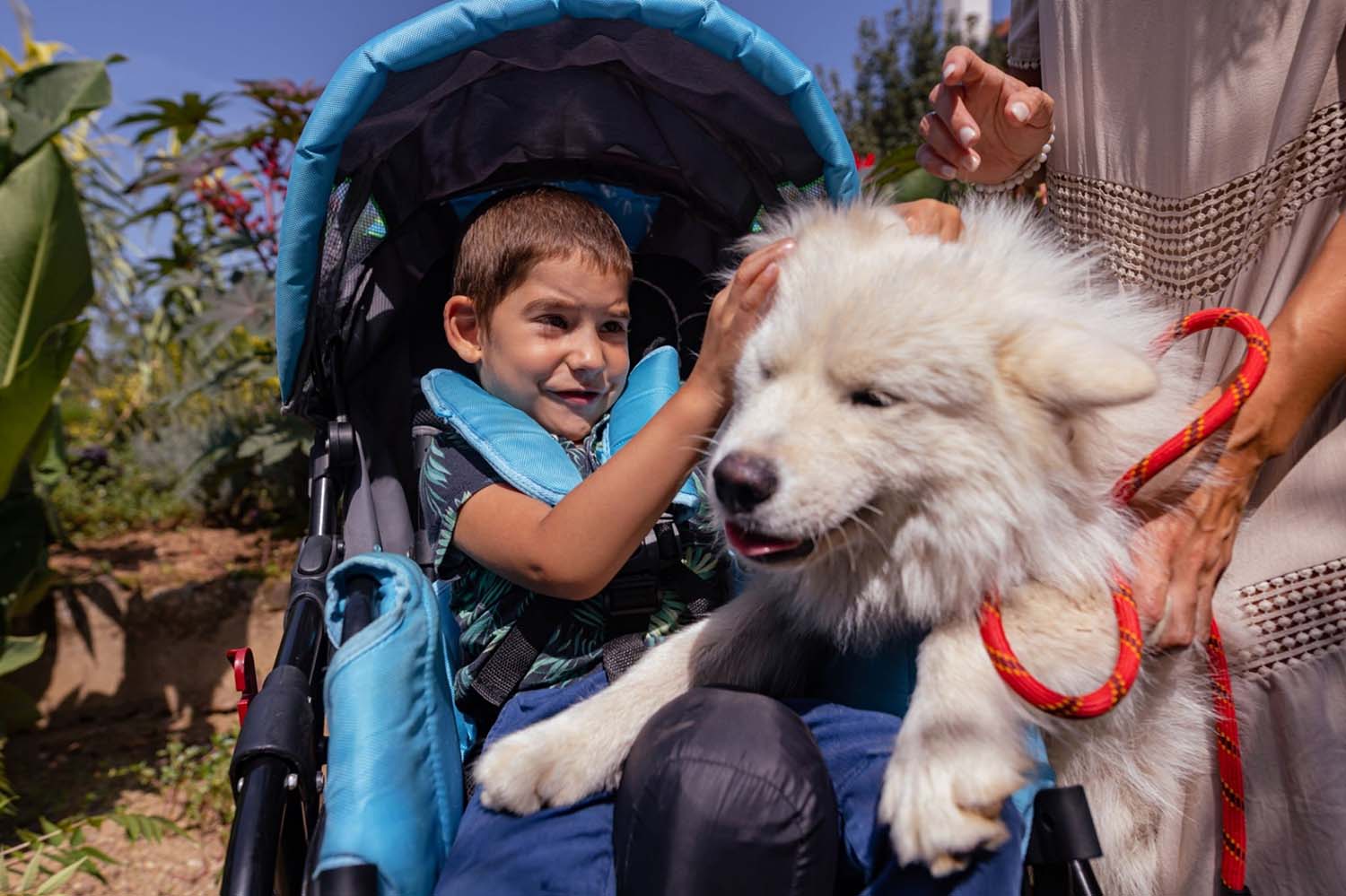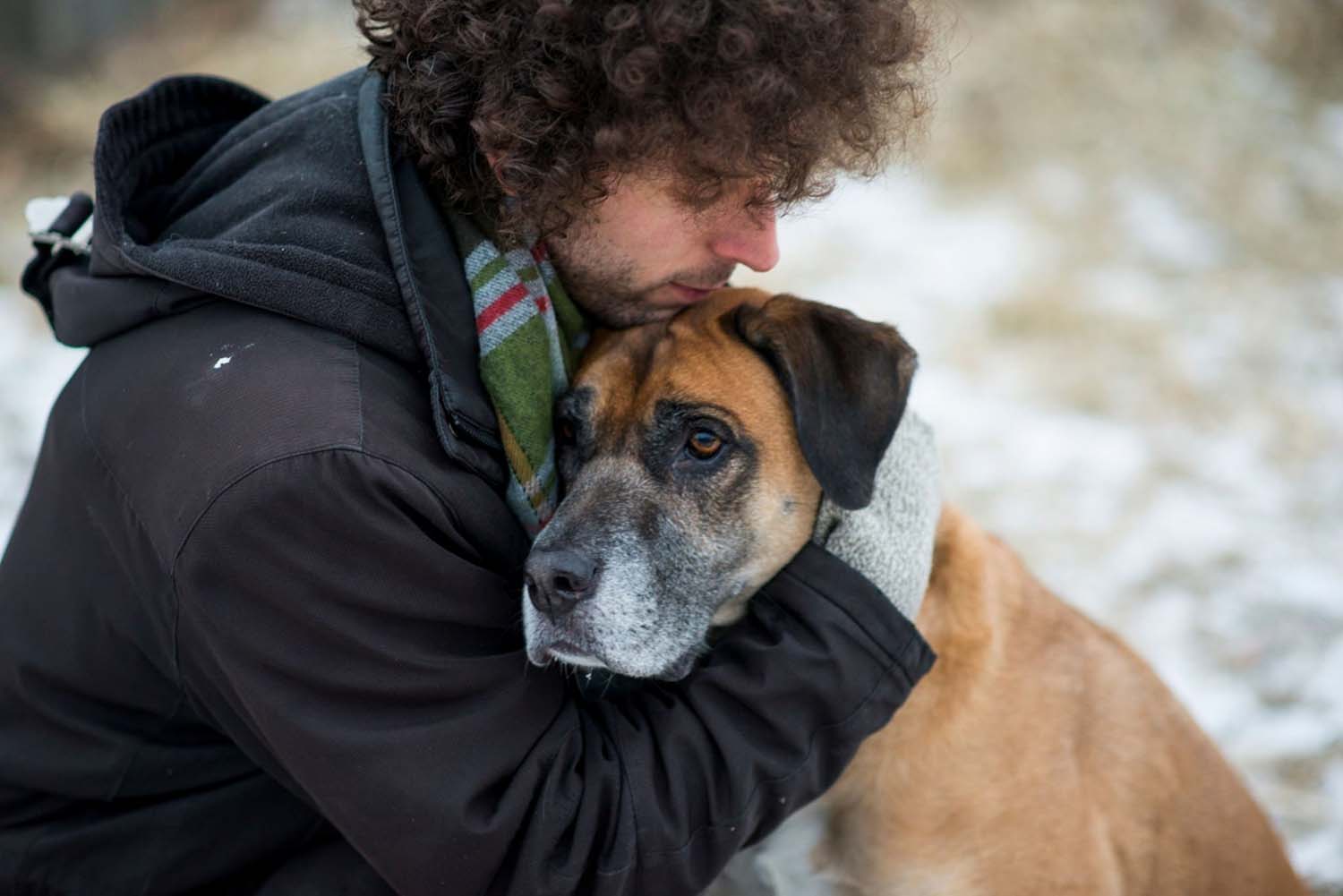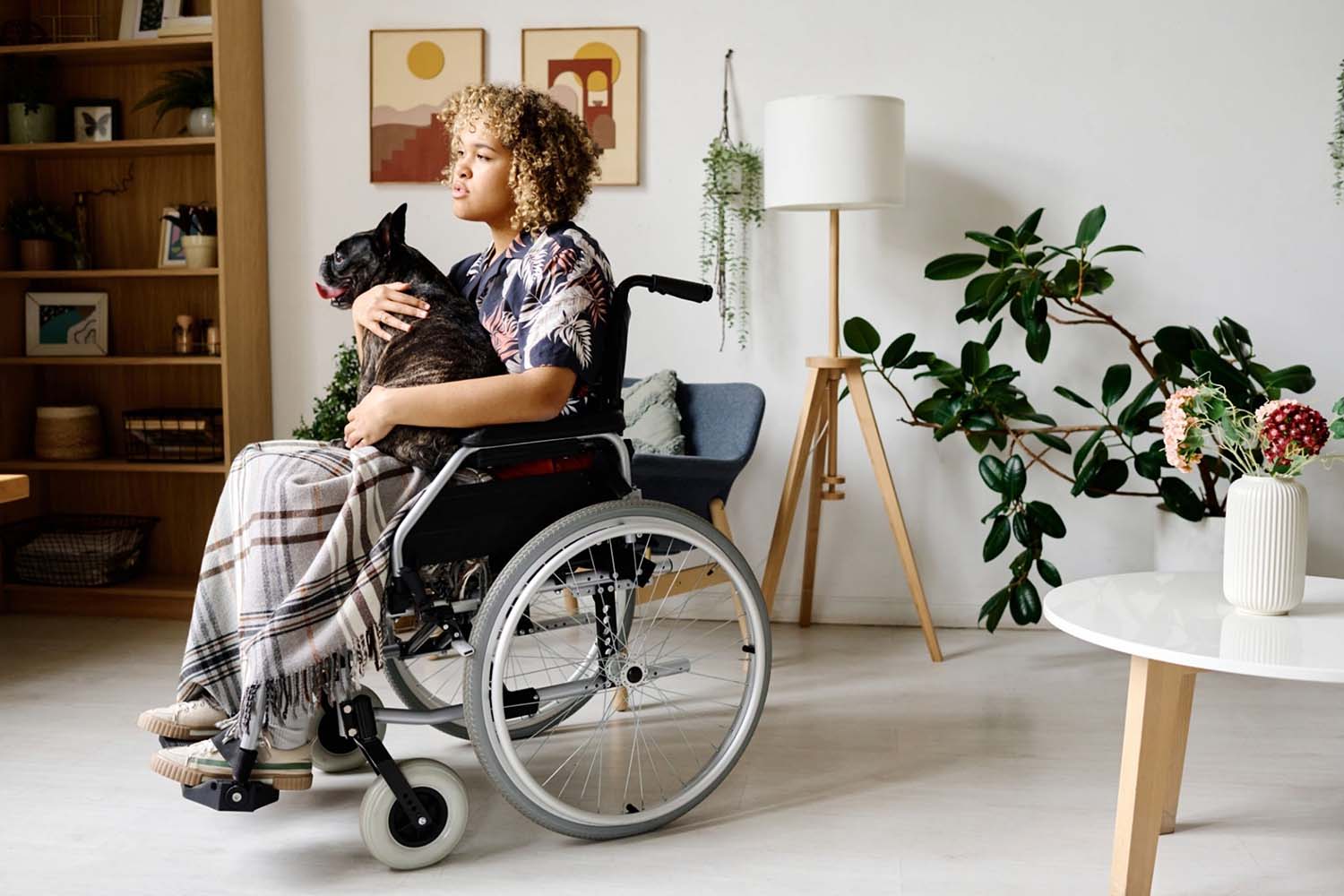A therapy dog is like a warm hug in fur form, bringing comfort and joy to those in need. Imagine a furry, four-legged friend wagging its tail, eager to offer a listening ear, unconditional love, and a calming presence. That’s what a therapy dog is all about.
Think of them as medicine for the soul, a prescription for happiness. They bring comfort and joy to those who are feeling overwhelmed, anxious, or just in need of a little extra love. From hospitals and nursing homes, to schools and disaster zones, therapy dogs are making a difference in people’s lives every day.
Their soft fur, wet noses, and wagging tails are like magic wands that can chase away the blues. They can bring a smile to someone’s face and help them forget their troubles, even if just for a moment.
It’s as if they know exactly what to do to make people feel better and bring happiness into their lives. They are truly man’s best friend and a true gift to humanity.
But what exactly is a therapy dog, and how does one come to own one? Let’s have a look in a little more detail…

What Does a Therapy Dog Do?
According to US Service Animals, a therapy dog is trained to provide comfort and emotional support to people in a variety of settings.
Some of the specific tasks a therapy dog may perform include:
1. Visiting hospitals and nursing homes to bring comfort to patients and residents
2. Providing emotional support to individuals in crisis situations, such as after a natural disaster or trauma
3. Assisting children in reading programs, where children can read to the dog and improve their reading skills
4. Helping veterans and individuals with PTSD to manage their symptoms and promote well-being
5. Providing support to individuals with disabilities, such as those with autism or mobility challenges
Therapy dogs are typically well-behaved, friendly, and social animals that have been trained and tested to ensure they are safe and appropriate for therapy work. They bring comfort and joy to those they interact with, making a positive impact on their emotional and physical well-being.
1. Therapy Dogs Visiting Hospitals and Nursing Homes
Imagine walking into a hospital room, feeling sad and lonely, when suddenly, a furry tail starts wagging and a wet nose nuzzles your hand.
That’s the magic of a therapy dog visiting a hospital or nursing home. These four-legged friends bring a ray of sunshine into what can often be a bleak and lonely environment.
Therapeutic visitation dogs offer a warm and furry distraction from the stresses and pains of being in a hospital or nursing home. And their love and affection are like medicine for the soul, helping to ease anxiety, depression, and loneliness.
It’s as if these therapy dogs know exactly what each person needs, offering a comforting nuzzle, a friendly lick, or just a calming presence to those who need it most.
2. Therapy Dogs Providing Emotional Support to Individuals in Crisis Situations
In times of crisis, a therapy dog can be like a lifesaver, offering comfort and emotional support to individuals who are going through a difficult time. They are like a warm hug in fur form, bringing comfort and a calming presence to those who need it most.
Think of them as a guardian angel with four legs, providing a sense of safety and security during a traumatic event. Their soft fur, wet noses, and wagging tails can chase away fear and anxiety, providing a sense of peace and comfort to those who are feeling overwhelmed.
In times of disaster, when everything else may seem uncertain, a therapy dog can offer a sense of stability and reassurance.
They provide a source of comfort and hope, reminding us that even in the darkest of times, there is still love and kindness in the world.
3. Therapy Dogs Assisting Children in Reading Programs
Picture this: a child walks into a room, feeling nervous and unsure about reading out loud. Then, a therapy dog wags its tail and approaches the child with a friendly, non-judgmental demeanour.
Suddenly, the child’s nerves disappear, and they begin to read with confidence. This is the magic of therapy dogs in reading programs.
It’s like these therapy dogs have a special gift for making reading fun and accessible. Their calm and friendly demeanour provides a comfortable and non-threatening environment, allowing children to relax and focus on their reading.
4. Therapy Dogs Helping Veterans and Individuals with PTSD
For veterans and individuals with post traumatic stress disorder, therapy dogs can be like a ray of sunshine on a cloudy day. They provide comfort, support, and a calming presence, helping to ease the symptoms of PTSD and improve the quality of life for those they serve.
Think of these furry friends as mental health superheroes, using their special powers of comfort and companionship to help those who have been through traumatic experiences. They provide a sense of safety and security, helping to ease anxiety and panic attacks, and offer a comforting distraction from intrusive thoughts and memories.
For veterans and individuals with PTSD, therapy dogs offer a non-judgmental and unconditional source of support, helping them to heal and cope with the challenges of post traumatic stress disorder.
With their soft fur and wagging tails, these furry friends are like a beacon of hope, reminding those they serve that they are not alone and that there is always light at the end of the tunnel.
5. Therapy Dogs Providing Support to Individuals With Disabilities
For individuals with disabilities, therapy dogs can be like a helpful and supportive companion, always there to offer comfort and assistance. They provide emotional support, improve mobility and independence, and offer a calming presence that can help to ease anxiety and stress.
They can help with physical tasks, like opening doors or picking up dropped items, and provide emotional comfort and support, helping to boost confidence and self-esteem.
Therapy dogs offer a sense of comfort and security, helping to ease anxiety and fear, and provide a sense of independence, giving those they serve a newfound sense of control over their own lives.
For individuals with disabilities, therapy dogs offer a non-judgmental and unconditional source of support, helping them to overcome the challenges of their disabilities and live life to the fullest. With their soft fur and wagging tails, these furry friends are like little blessings, offering comfort, support, and hope to those who need it most.

What Are the Best Types of Therapy Dog?
There are many breeds of dogs that can make great therapy dogs, and the best type of therapy dog can vary depending on the individual’s specific needs. Some of the most popular breeds for therapy work include Labrador Retriever, Golden Retriever, Poodle, Boxer, and bulldogs, just to name a few.
It’s important to note that the best type of therapy dog is not necessarily determined by breed, but rather by the individual dog’s temperament, personality, and trainability. The most successful therapy dogs are usually friendly, calm, confident, and patient, and have the ability to adapt to new situations and people.
Additionally, it’s important for therapy dogs to have good socialisation skills and the ability to behave well in public, as they will be interacting with a variety of people, including those who may be elderly, disabled, or emotionally vulnerable.
Whether it’s a friendly Labrador Retriever, a gentle Poodle, or any other breed, the most important thing is that the therapy dog is well-behaved, friendly, and has a calming presence that can make a positive impact on the lives of those they serve.
What Does it Take to Be a Therapy Dog?
Being a therapy dog is not just about being cute and cuddly, it takes a special kind of dog to thrive in this role. Think of it like being an actor, the therapy dog must have the right demeanour and personality to perform the role of a comfort provider and emotional support system to those in need.
Just like an actor, a therapy dog must have excellent social skills and the ability to perform under pressure. They must be confident, friendly, and patient with new people, children, and animals, yet remain calm and focused in any situation. A good therapy dog must be a great communicator, able to read people’s emotions and respond to their needs through their actions and demeanour.
Being a therapy dog also requires physical attributes. They should be in good health, have a friendly and approachable appearance, and be well-behaved in public. They should be able to sit still for long periods of time, walk calmly on a leash, and be able to tolerate being handled and petted by strangers.

How Can I Get a Therapy Dog?
There’s a three-point process to getting a therapy dog who can support you in your life:
1. Adopt a dog.
2. Train your dog.
3. Register your dog.
1. Adopt a Dog
Adopting a dog involves finding a dog that is suitable for your lifestyle and living conditions, and then taking legal and financial responsibility for its care. This can be done through a local animal shelter, rescue organisation, or reputable breeder.
Before adopting, it’s important to consider factors such as the time and cost involved in taking care of a dog, as well as the breed and size of the dog and how it will fit into your home and routine.
2. Train Your Dog
Training your furry friend to be a therapy or service dog is an important step. Once you’ve found the paw-fect pooch, it’s best to start therapy animal training right away. Even if you’re planning on going solo, it’s always helpful to get some expert advice and guidance from a therapy dog training professional.
Think of it like having a coach for a sports team, having someone with experience can make the training process a walk in the park.
3. Register Your Dog
Choosing which therapy dog organisation to join is like finding the right fit for your and your furry companion. Different organisations have their own set of rules, like what kind of behaviour is expected from the dogs in public.
Some places where therapy dogs visit, like hospitals, schools, and nursing homes, may only accept therapy dogs from certain organisations and also have their own requirements for the dog’s health and age.
To make your pup an official therapy dog, you’ll need to show proof of their good health with a veterinary record. One well-known therapy dog organisation is Therapy Dogs International (TDI), which is one of the oldest and largest in the US.

Therapy Dogs vs Services Dogs vs Emotional Support Dogs … Clearing Up the Confusion
What is a Service Dog?
Think of a service dog as a personal assistant, individually trained to perform specific tasks for someone with a disability. According to the Americans with Disabilities Act, these dogs play an important role in ensuring people with disabilities are treated fairly and can live their lives without discrimination.
Now, a service dog is different from a therapy dog. While therapy dogs love to interact with everyone, service dogs are solely focused on helping one person with a disability.
For example, everyone knows about guide dogs for the visually impaired, but did you know that some service dogs are trained to monitor the blood sugar levels of individuals with diabetes? That’s just one example of many service dogs who help people with physical disabilities.
It’s important to note that service dogs have full public access rights, meaning they can accompany their human companions to places where animals are typically not allowed. So, whether they’re assisting with physical or mental disabilities, service dogs truly are superheroes in disguise!
What Are Emotional Support Dogs?
Think of an emotional support dog as a personal emotional helper, hand-picked to bring comfort and support to just one individual. They are like a warm hug when you’re feeling down or a trusted confidant that never judges.
These dogs, also known as comfort dogs, are not just any ordinary pet, they are recognized for their role in improving their owner’s mental health. But unlike service dogs, they don’t need to go through the same intense training regimen. In fact, all they need is a doctor’s note or a mental health professional’s recommendation to be considered emotional support animals.
Just like service dogs and therapeutic visitation dogs, emotional support dogs are given special treatment under the Federal Fair Housing Act. This means, even if the place you’re living in doesn’t normally allow pets, you can still have your ESA by your side.

Therapy Dogs: A Short Guide to Everything Else You Need to Know
How can someone become a therapy dog handler?
To become a therapy or service dog handler, one needs to get their dog certified by a therapy dog organization and then complete training and testing with their dog. The handler also needs to be able to handle their dog in various public settings, ensuring the dog is well-behaved and socialized. Ongoing evaluation and training may also be required to maintain therapy animal certification.
What kind of training do therapy dogs need to undergo?
Therapy dogs need to undergo obedience training and behavioral training to ensure they are well-behaved and able to handle various environments and situations. They may also need additional training specific to their intended role, such as visiting hospitals or assisting with reading programs.
Are there any laws and regulations that pertain to therapy dogs?
Yes, there are laws and regulations for therapy and service dogs. The Americans with Disabilities Act (ADA) outlines the rights of individuals with service dogs and the Fair Housing Act (FHA) allows individuals to live with their emotional support animals in rental properties. Therapy animals may also be subject to regulations by local and state governments.
What is the role of a therapy dog in a healthcare setting?
The role of therapy and service dogs in a healthcare setting is to provide comfort, support, and emotional healing to patients, their families, and healthcare workers. Therapy animals are trained to interact with patients and are used in hospitals, nursing homes, rehabilitation facilities, and other healthcare settings.
They can help to reduce anxiety and stress levels, lower blood pressure, boost mood and self-esteem, and provide a sense of comfort and connection to those in need. Therapy dogs are an important part of the healthcare team and can play a significant role in the physical and emotional well-being of patients.








